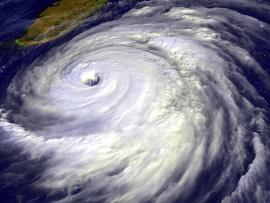Browse 9 - 12 Resources
Browse 9 - 12 Resources
Primary Topic:
Subtopics:
Type:
Standards:
Keywords:
Summary:
This is the first of three lessons that have been developed to teach students about Earth’s water cycle, the importance of freshwater resources, and how NASA studies water in Earth’s systems.
Primary Topic:
Subtopics:
Type:
Keywords:
Summary:
This short video, derived from the Science on a Sphere film "Water Falls", explores how Earth's freshwater resources are allocated and used.
Primary Topic:
Subtopics:
Type:
Keywords:
Summary:
Read about the chemistry of water and how scientists believe it formed and came to be found on Earth.
Primary Topic:
Subtopics:
Type:
Standards:
Keywords:
Summary:
Water on Earth travels freely, without regard to borders, but it's not evenly distributed around the world, and that distribution is changing as climate changes.
Primary Topic:
Subtopics:
Type:
Keywords:
Summary:
Rain gauges are the most common tool for measuring rain, but how do they actually work? What are some other ways we measure precipitation?
Primary Topic:
Subtopics:
Type:
Keywords:
Summary:
Humans need freshwater for many purposes, but it's not evenly distributed across our planet, which can create challenges for many communities.
Primary Topic:
Subtopics:
Type:
Standards:
Keywords:
Summary:
Read about why we need to measure precipitation from space, instead of relying solely on ground-based measurements.
Primary Topic:
Subtopics:
Type:
Summary:
A presentation and capture sheet to help students explore career options in STEM fields, at NASA and beyond.
Primary Topic:
Subtopics:
Type:
Standards:
Keywords:
Summary:
In this engineering design challenge, students build a tower to resist a simulated hurricane.
Primary Topic:
Subtopics:
Type:
Summary:
Build a paper model of the GPM Core Observatory and learn about the technology the satellite will use to measure precipitation from space.











